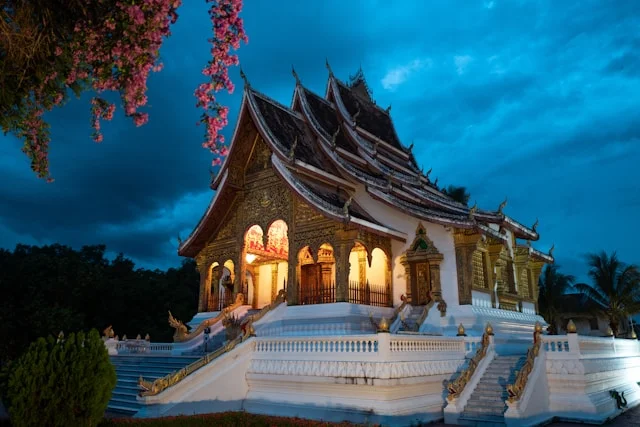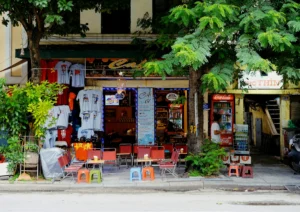Ancient Kingdoms and Early Civilizations
The Kingdom of Lan Xang: The Land of a Million Elephants
The Kingdom of Lan Xang, established in 1353 by King Fa Ngum, is one of the most significant eras in Lao history. Often referred to as the “Land of a Million Elephants,” Lan Xang was a powerful and influential kingdom that laid the foundation for modern-day Laos. The kingdom thrived for over 300 years, expanding its territory and establishing Vientiane as its capital. Lan Xang is celebrated for its contributions to Lao culture, including the spread of Theravada Buddhism and the construction of magnificent temples.
The Influence of the Khmer Empire
Before the rise of Lan Xang, the region now known as Laos was heavily influenced by the Khmer Empire. Evidence of Khmer presence can be found in the ancient temple complex of Vat Phou, a UNESCO World Heritage site located in southern Laos. Built between the 5th and 15th centuries, Vat Phou is an outstanding example of Khmer architecture and spiritual significance. The site’s alignment with the sacred mountain Phou Kao highlights the deep connection between nature and spirituality in early Lao civilizations.
Colonial Era: The French Indochina Period
French Colonization and Its Impact
In the late 19th century, Laos became part of French Indochina, along with Vietnam and Cambodia. French colonization brought significant changes to the political, economic, and cultural landscape of Laos. The French influence is evident in the colonial architecture of cities like Vientiane and Luang Prabang, where charming French villas and administrative buildings still stand. This period also saw the introduction of new crops, infrastructure development, and the spread of Western education.
Resistance and Independence
The journey to independence was a turbulent one for Laos. The country became a battleground during World War II and later during the First Indochina War. In 1953, Laos achieved full independence from France. However, the ensuing decades were marked by internal conflict and involvement in the Vietnam War, leading to significant social and economic challenges. Despite these hardships, Laos has remained resilient, preserving its cultural heritage and forging a path towards stability and growth.

Cultural Heritage: Temples and Traditions
The Significance of Theravada Buddhism
Theravada Buddhism is deeply woven into the fabric of Lao society. Temples, or wats, are central to community life, serving as places of worship, education, and social gathering. Wat Xieng Thong in Luang Prabang is one of the most revered temples, showcasing classic Lao architecture with its intricate carvings and gold embellishments. The daily alms-giving ritual, where monks receive food offerings from the local community, is a poignant reflection of the spiritual devotion and communal harmony that characterize Lao culture.
Traditional Festivals and Ceremonies
Lao culture is rich with traditional festivals and ceremonies that celebrate its heritage and beliefs. Boun Pi Mai, the Lao New Year, is one of the most important festivals, marked by water-splashing, temple visits, and cultural performances. That Luang Festival, held in November, honors the Great Stupa in Vientiane with grand processions, almsgiving, and traditional music and dance. These festivals are not only vibrant and joyful occasions but also serve to reinforce cultural identity and social cohesion.
Historical Sites and Landmarks
The Plain of Jars: A Mysterious Archaeological Site
The Plain of Jars in Xieng Khouang Province is one of Laos’ most enigmatic archaeological sites. Scattered across the landscape are thousands of large stone jars, dating back to the Iron Age. The purpose of these jars remains a mystery, with theories suggesting they were used for burial practices or storage. The site’s historical significance and the stunning natural surroundings make it a compelling destination for history enthusiasts and curious travelers alike.
Luang Prabang: A UNESCO World Heritage City
Luang Prabang, a city in northern Laos, is renowned for its well-preserved architectural and cultural heritage. Designated as a UNESCO World Heritage site, Luang Prabang is a blend of traditional Lao wooden houses and French colonial buildings. The city is home to numerous temples, including the revered Wat Mai and the Royal Palace Museum, which offers insights into the history of the Lao monarchy. The town’s tranquil ambiance and rich heritage make it a jewel in the crown of Lao history.
Preservation and Promotion of Heritage
Efforts to Preserve Cultural Heritage
Laos has made significant efforts to preserve its cultural heritage and promote sustainable tourism. Initiatives to restore and maintain historical sites, such as the restoration of temples and ancient structures, play a crucial role in safeguarding the country’s legacy. Community-based tourism projects aim to provide authentic cultural experiences while supporting local economies and preserving traditional lifestyles.
Cultural Heritage Education and Awareness
Educational programs and awareness campaigns are vital in promoting the appreciation and protection of Lao heritage. Schools and community organizations work to educate the younger generation about their cultural roots and the importance of heritage conservation. Festivals and cultural events also serve as platforms for showcasing and celebrating Lao traditions, fostering a sense of pride and continuity among the people.



